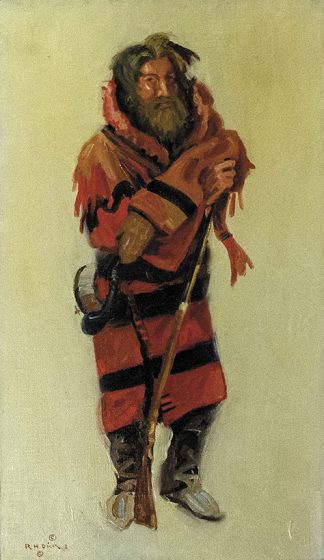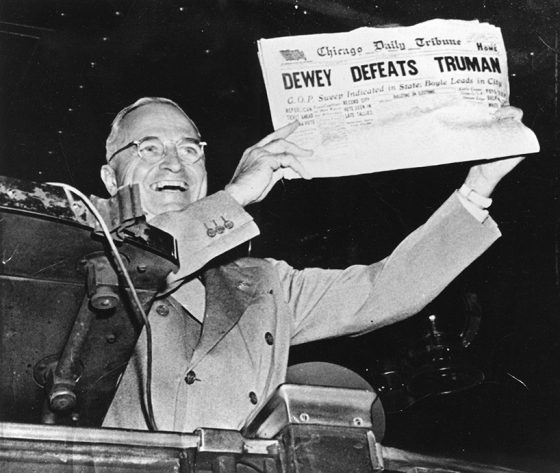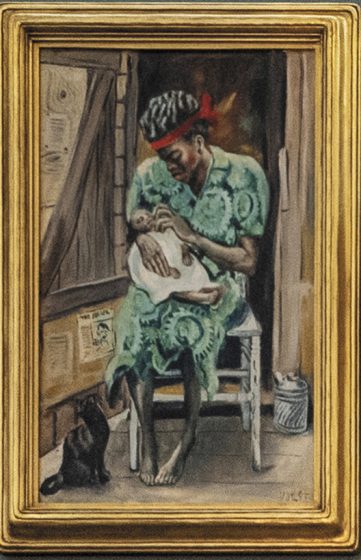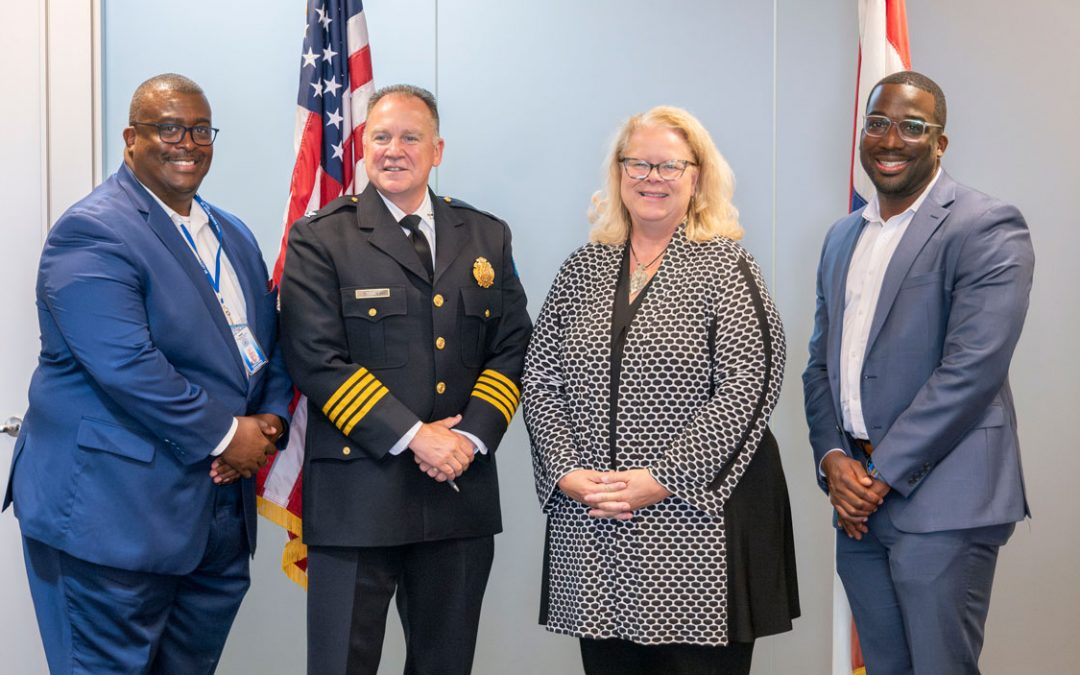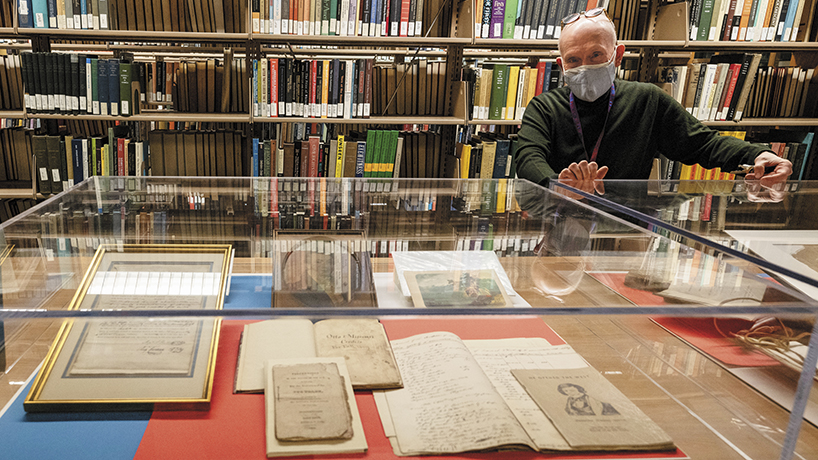
Executive director John Neal Hoover has had a 37-year-career at the St. Louis Mercantile Library. (Photos by August Jennewein)
By David Morrison
It’s a question that John Neal Hoover, executive director of the St. Louis Mercantile Library at the University of Missouri–St. Louis, gets quite often. One that is both simple and exceedingly difficult to answer: “What is your favorite item at the Mercantile Library?”
It’s simple in the sense that Hoover has spent the past 37 years immersing himself in – and gaining intimate knowledge of – the pieces that make up the library’s unique collections. It’s exceedingly difficult in the sense that he has a hard time narrowing his list down to just a few favorites.
“I could go on and on,” Hoover says.
The exhibition includes “Trapper,” a small oil painting by St. Louis artist R. H. Dick, who was born in in 1943 in Kansas City, Missouri, and became inspired to devote his career to depicting the American West after a trip to Taos in 1956.
Around 350 of Hoover’s favorite pieces are on display as part of this spring’s exhibition, “A Nation, A City, & Its First Library: Americana, as a Way of Life at the St. Louis Mercantile Library for 175 Years.”
The exhibition spans the library’s atrium and levels 1 and 2 and is broken down into seven main sections, each centering on a different aspect of the library’s extensive, eclectic holdings.
Hoover and the Mercantile Library staff envision the exhibition, its accompanying book and the year’s worth of events surrounding it as a celebration of the longest-tenured continuously running library west of the Mississippi River and its place as a St. Louis institution.
The original print of the famous “Dewey Defeats Truman” picture is on display, part of the library’s St. Louis Globe-Democrat newspaper collection. So is the handwritten 1832 Rocky Mountain Fur Traders’ Rendezvous account book early library member Robert Campbell kept. Also the only known photograph capturing someone “marking twain” – or checking the depth of the water – on the Mississippi River, a term that would serve as the basis of the pen name for a rather famous American literary figure.
Those are all among the most impressive pieces in the Mercantile Library’s possession. And there are many, many more.
“The library has always been a collection of great depth and breadth,” Hoover says. “It’s one of the few that does that. A lot of times a library will collect deeply in one or two subjects or they’ll collect broadly. We do both. If it’s recognized what a special circumstance that is through this exhibition, that’s a wonderful achievement.”
‘A nation, a city, and its first library’
In this St. Louis Globe-Democrat photograph, a triumphant President Harry S. Truman holds up the Chicago Daily Tribune on Nov. 3, 1948 during a stop at St. Louis Union Station to display the famously erroneous “Dewey Defeats Truman” headline. The paper misjudged the outcome of the presidential election and declared Thomas E. Dewey the winner.
The main theme running throughout the spring exhibition is how, since the Mercantile Library first opened its doors in April 1846, its collection has been a multifaceted reflection of the history of St. Louis and the nation.
The first level of the library contains separate exhibitions celebrating the people and places of Americana. Highlights include selections from the papers of Silas Bent, a notable St. Louisan of the 19th century who was the first lieutenant on Commodore Matthew Perry’s expedition to Japan.
The atrium level contains manuscripts from presidents such as George Washington, Thomas Jefferson, James Monroe and James K. Polk, and pieces of artwork from painter Charles Deas, who gained national renown for his portraits of the fur trade and Native Americans. Books containing artwork of Native Americans from the collection of Gen. William Tecumseh Sherman – a former Mercantile Library board member – are also on display on Level 1 in the Bates Gallery.
The second level focuses on the idea of “firsts”: first accounts, first publications, first almanacs, novels and textbooks printed in St. Louis. Level 1 also contains representations of how the library looked when it was founded in the 1840s, through enlargements of old photographs and furniture and artifacts from the period.
A German émigré to St. Louis, Joseph Paul Vorst (1897-1947) made public art for the Works Progress Administration and taught and created art in the city, including “Mother and Child,” oil on Masonite, circa 1940.
“We were founded in the era of Manifest Destiny, the Mexican War: 1846 was an important year in the country,” Hoover says. “We’re trying to show how diverse the exhibition is as well. In the large gallery on the first floor, the centerpiece of the entire exhibition is the story of the African American experience within the city and how that related to this institution. We collected widely around African American history, the history of slavery and slave narratives.”
Library staff is planning a yearlong celebration of the exhibition and the Mercantile Library’s 175th anniversary, which also happens to coincide with the 25th anniversary of its affiliation with UMSL. While COVID-19 health and safety guidelines preclude the library from offering some of the trappings that normally go with exhibitions of this nature, Hoover anticipates virtual events and lectures in the late spring and summer followed by some events and special programs in the fall as as health protocols allow.
All culminating – hopefully – with a big celebration in April 2022.
“This allows us to savor this for an entire year,” Hoover says. “That seemed to make sense to us, since we’re all trying to get back to normal as carefully as we can.”
As the community takes in the exhibition and the suite of programming that surrounds it, Hoover hopes that people come away with a new appreciation for the Mercantile Library.
And, just maybe, a few favorite pieces of their own.
“I’ll feel like it’s a very successful exhibition if I see pride in viewers,” Hoover says. “Sometimes we get this from people – and it’s a little backhanded: ‘We didn’t know this was here.’ If people are reacquainted with the library and its importance to the city, the nation and the university in a very proud sense, that’s credit enough.”
This story was originally published in the spring 2021 issue of UMSL Magazine. If you have a story idea for UMSL Magazine, email magazine@umsl.edu.

